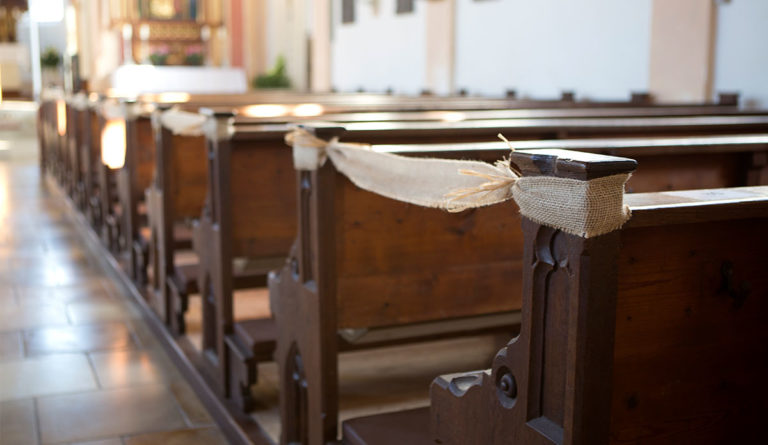Narratives and Counter-Narratives for Religion and COVID-19
Religious group statements during COVID-19 combined public health messaging with their own perspective and spiritual context.

Read Time: 3 minutes
Published:
American religious groups of all faiths are far more supportive of public health measures designed to end the COVID-19 pandemic than reports in major news outlets suggest. My colleagues and I used computational text analysis methods to examine media reports and compare them with documents from public health authorities and from faith communities themselves.
Our research challenges the dominant narrative of a contentious relationship between faith communities and the efforts of public health authorities to prevent transmission of the virus. We found evidence of a critical counter-narrative involving surprisingly similar messaging between public health organizations and faith communities. The COVID recommendations that faith communities featured on their public websites often mirrored and endorsed public health messaging created for faith communities.
I was spurred to this research after noticing that national news coverage — largely portraying religious groups as focused on individual rights rather than on reducing the risk to others — didn’t square with my experiences of seeing chaplains and congregations ministering remotely to the dying, taking their worship services online, or providing meals to health care workers.
We started by collecting 634 New York Times stories published between January 1 and June 30, 2020 that contained religious and pandemic-related terms. We also gathered 63 COVID-19 statements from faith-based organization websites and seven different guidance reports specifically for faith groups released by the CDC and WHO during that time. The religious group websites represented all major faith traditions, with their millions of members.
Thus the “narrative” of religious opposition to public health measures appeared to change over time.
Dimitrios Zaras, who earned his PhD in sociology earlier this year, conducted a sentiment analysis, examining every word in the documents for negative and positive values. His work showed that religious groups’ statements were positively-valenced throughout the period. He also found that The New York Times’ coverage, while initially negative in sentiment, grew more positive over time and by June 2020 was indistinguishable in sentiment from the tone of the faith-based groups’ statements. Thus the “narrative” of religious opposition to public health measures appeared to change over time.
John Bernau, the director of digital scholarship at Emory’s Center for the Study of Law & Religion, found a similar overlap between religious groups and public health in his topic modeling analysis, which identifies the most frequently co-occurring terms. Of 30 possible topics found in the text pooled from all sources, the first- and second-most frequently-occurring topics (“worship risk considerations” and “religious support”) were identical for the public health sources and faith groups’ web site statements. Put another way, official religious group statements combined public health messaging with their own perspective and spiritual context. “Their overarching similarity encourages a more nuanced understanding of how faith-based organizations responded to the pandemic,” Bernau says.
Our research could have implications for the ongoing effort to promote widespread vaccination and curb the COVID-19 virus. My hope is that we can reframe the conversation. Faith-based organizations are so attuned to the needs of their own communities and so trusted — and trust is the piece people have to have when being asked to act.
Photo via Getty Images



